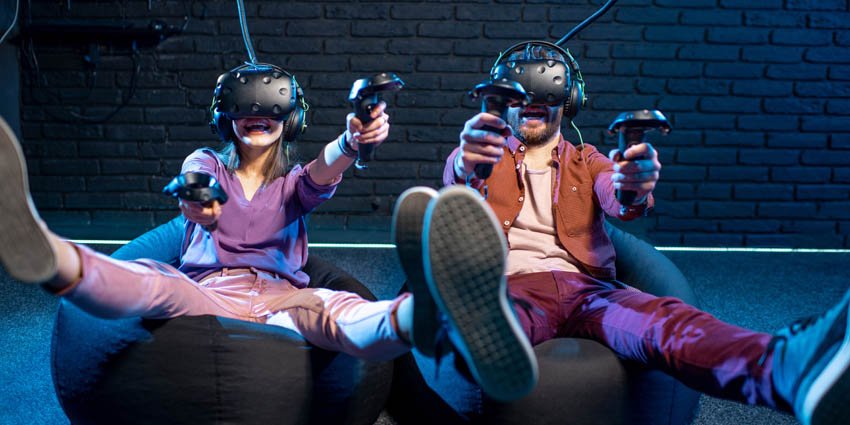
The metaverse is rapidly transforming the gaming industry, offering players immersive, interactive experiences that go beyond traditional video games. In the metaverse, gaming is no longer confined to the screen—players can enter fully realized virtual worlds, socialize with other players, and even earn real-world rewards through play-to-earn (P2E) models. This article explores how gaming in the metaverse is changing the entertainment landscape and what the future holds for this rapidly evolving space.
What is the Metaverse in Gaming?
The metaverse is a collective virtual space where users can interact with each other and digital environments in real-time. In gaming, the metaverse offers an immersive, persistent world that players can explore, build, and shape. Unlike traditional video games, where players follow a linear narrative or complete specific tasks, metaverse games are open-ended, allowing players to create their own experiences and interact with other users in a shared digital environment.
Popular metaverse platforms like Decentraland, The Sandbox, and Roblox are leading the way in this new era of gaming. These platforms allow players to buy virtual land, build structures, create mini-games, and socialize with other players, all within a blockchain-based environment.
The Rise of Play-to-Earn Gaming
One of the most significant developments in metaverse gaming is the rise of play-to-earn (P2E) models. In traditional gaming, players typically spend money on in-game purchases, such as skins, weapons, and virtual currencies, without any opportunity to earn money in return. However, P2E games allow players to earn real-world rewards by playing and completing tasks within the game.
These rewards often come in the form of cryptocurrencies or NFTs, which players can sell on secondary markets for real money. For example, games like Axie Infinity and The Sandbox have gained popularity by allowing players to earn valuable digital assets that can be traded for profit. In Axie Infinity, players collect and battle creatures called Axies, and successful players can earn tokens that are convertible to real-world currency.
The P2E model has opened up new possibilities for gamers, particularly in regions where economic opportunities are limited. In countries like the Philippines and Venezuela, many players have turned to P2E games as a source of income, making gaming a viable way to earn a living.
Social Interaction in Metaverse Games
Gaming in the metaverse is not just about competition and rewards; it also offers new ways for players to socialize and connect with others. In metaverse games, players can attend virtual events, explore digital worlds together, and even collaborate on projects. For example, in Decentraland, users can visit virtual art galleries, attend concerts, or hang out with friends in virtual spaces.
This social aspect of metaverse gaming is becoming increasingly important, particularly as more people look for ways to connect in digital environments. As the metaverse continues to evolve, we can expect to see more emphasis on social experiences, with games offering players a chance to build communities, host events, and interact with others in meaningful ways.
Ownership and Creativity in the Metaverse
One of the key features of metaverse gaming is the emphasis on player ownership and creativity. In traditional games, players do not truly own the in-game assets they acquire. Instead, these assets are controlled by the game developer, and players can lose access to them if the game is shut down or their account is banned.
In contrast, metaverse games are built on blockchain technology, which allows players to own and control their in-game assets. These assets, often represented as NFTs, can be bought, sold, and traded on secondary markets, giving players more control over their gaming experience.
Additionally, many metaverse games offer players the tools to create their own content. Platforms like Roblox and The Sandbox provide players with development tools that allow them to design and build their own games, experiences, and digital environments. This shift toward user-generated content is empowering players to become creators, turning gaming into a more interactive and collaborative experience.
The Future of Gaming in the Metaverse
As technology continues to advance, the future of gaming in the metaverse looks incredibly promising. We can expect to see more immersive virtual worlds, enhanced by technologies like virtual reality (VR) and augmented reality (AR). These advancements will create even more realistic and interactive gaming experiences, allowing players to fully immerse themselves in digital environments.
We may also see the rise of more sophisticated P2E models, with games offering players additional ways to earn real-world rewards. The integration of DeFi (decentralized finance) into gaming could open up new opportunities for players to earn interest on their in-game assets, borrow against their NFTs, or participate in virtual economies.
Additionally, as the metaverse becomes more mainstream, we can expect to see major gaming companies and brands entering the space. Companies like Epic Games and Facebook (Meta) are already investing heavily in metaverse development, and it is likely that other industry leaders will follow suit. This influx of resources and talent could lead to even more innovative and groundbreaking metaverse gaming experiences.
Challenges and Considerations
While the future of gaming in the metaverse is exciting, there are challenges that need to be addressed. One of the main concerns is the environmental impact of blockchain-based games, particularly those that use Proof of Work (PoW) consensus mechanisms. As the popularity of metaverse games grows, so does the demand for energy-intensive blockchain transactions.
Another challenge is the accessibility of metaverse gaming. While P2E games offer opportunities for players to earn real-world rewards, the upfront cost of participating in these games can be prohibitive. For example, players in Axie Infinity need to purchase Axies before they can start playing, and the cost of these creatures can be high. This creates a barrier to entry for many players, particularly those in regions with limited financial resources.
Finally, there are concerns about the regulation and governance of metaverse games. As these virtual worlds grow in popularity, questions about property rights, taxation, and digital identity will need to be addressed to ensure that the metaverse remains a safe and inclusive space for all players.
Conclusion
Gaming in the metaverse represents a new era of entertainment, offering players immersive experiences, social interaction, and the opportunity to earn real-world rewards. As technology continues to evolve, the metaverse will likely become an even more integral part of the gaming landscape, with new opportunities for creativity, ownership, and collaboration. While there are challenges to overcome, the potential of gaming in the metaverse is immense, and it is poised to reshape the way we play and interact in digital spaces.







